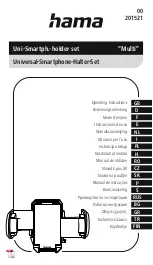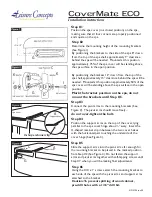
6
Additional functions
The GRSE18 sensor features a test input ("TI" on the connection diagram [B]), which can be used
to check that the sensor is functioning correctly: If cable sockets with LED indicators are used,
you must ensure that the TI is assigned accordingly.
There must be no object between the sender and receiver; activate the test input (see the con‐
nection diagram [B], TI at 0 V). The send LED is shut down or the detection of an object is simula‐
ted. Refer to Graphics C and G to check the function. If the switching output fails to behave in
accordance with Graphic C, check application conditions. See section Fault diagnosis.
7
Fault diagnosis
Table 8 indicates which measures are to be taken if the sensor stops working.
8
Tab_Fault diagnosis
LED indicator/fault pattern /
LED indicator/fault pattern
Cause /
Cause
Measures /
Measures
Green LED does not light up /
Green LED does not light up
No voltage or voltage below the
limit values /
No voltage or voltage below the
limit values
Check the power supply, check all
electrical connections (cables and
plug connections) /
Check the power supply, check all
electrical connections (cables and
plug connections)
Green LED does not light up /
Green LED does not light up
Voltage interruptions /
Voltage interruptions
Ensure there is a stable power
supply without interruptions /
Ensure there is a stable power
supply without interruptions
Green LED does not light up /
Green LED does not light up
Sensor is faulty /
Sensor is faulty
If the power supply is OK, replace
the sensor /
If the power supply is OK, replace
the sensor
Green LED lights up, no output sig‐
nal when object is detected /
Green LED lights up, no output sig‐
nal when object is detected
Test input (TI) is not connected
properly /
Test input (TI) is not connected
properly
See the note on connecting the
TI /
See the note on connecting the TI
Yellow LED flashes /
Yellow LED flashes
Sensor is still ready for operation,
but the operating conditions are
not ideal /
Sensor is still ready for operation,
but the operating conditions are
not ideal
Check the operating conditions:
Fully align the beam of light (light
spot) with the receiver. / Clean the
optical surfaces / Readjust the
sensitivity (potentiometer) / If the
potentiometer is set to the max.
sensing range: Reduce the dis‐
tance between the sender and the
receiver, and check against Gra‐
phic E / Check sensing range and
adjust if necessary, see Graphic
E /
Check the operating conditions:
Fully align the beam of light (light
spot) with the receiver. / Clean
the optical surfaces / Readjust
the sensitivity (potentiometer) / If
the potentiometer is set to the
max. sensing range: Reduce the
distance between the sender and
the receiver, and check against
Graphic E / Check sensing range
and adjust if necessary, see Gra‐
phic E
Additional functions
Irrtuemer
| SICK
5
8016954.16B5








































